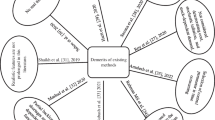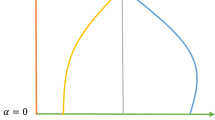Abstract
In this era of trying to get more information from data, demand forecasting plays a very important role for companies. Companies implement many of their plans based on these forecasts. However, forecasting demand is not always easy. Demand is divided into many different classes depending on its structure. One of them is the problem of intermittent demand. Estimating intermittent demand is a more difficult problem than estimating series with low variability and no null demand. When working with intermittent demands, either a good demand forecast or a good inventory policy is required. Determining an efficient inventory policy is important in terms of meeting customer demand and customer satisfaction. In this study, an inventory lower bound and upper bound are calculated to balance the inventory cost of intermittent demand and the lost sale cost. For this purpose, 7 different test data with intermittent demand structure were studied. A mathematical model is proposed to calculate the cost with the upper and lower inventories under intermittent demand. A feasible solution could not be obtained with the proposed model, and a fitness function for the relevant model was proposed. This function was run on test data using genetic algorithm (GA) and particle swarm optimization (PSO). The results and solution times of GA and PSO were compared. In this way, the variability of demand and the difference between arrival times of demands were met with minimal cost.








Similar content being viewed by others
Explore related subjects
Discover the latest articles, news and stories from top researchers in related subjects.Data availability
Enquiries about data availability should be directed to the authors.
References
Agin N (1966) A min-max inventory model. Manag Sci 12(7):517–529
Altay N, Rudisill F, Litteral LA (2008) Adapting Wright’s modification of Holt’s method to forecasting intermittent demand. Int J Prod Econ 111(2):389–408
Axsäter S (2015) Inventory control, vol 225. Springer, Cham
Babai MZ, Ladhari T, Lajili I (2015) On the inventory performance of multi-criteria classification methods: empirical investigation. Int J Prod Res 53(1):279–290
Babai MZ, Dallery Y, Boubaker S, Kalai R (2019) A new method to forecast intermittent demand in the presence of inventory obsolescence. Int J Prod Econ 209:30–41
Babai M, Chen H, Syntetos A, Lengu D (2020) A compound-Poisson Bayesian approach for spare parts inventory forecasting. Int J Prod Econ 232:107954
Balugani E, Lolli F, Gamberini R, Rimini B, Babai MZ (2019) A periodic inventory system of intermittent demand items with fixed lifetimes. Int J Prod Res 57(22):6993–7005
Balugani E, Lolli F, Gamberini R, & Rimini B (2017) Inventory control system for intermittent items with perishability. In: DEStech transactions on engineering and technology research (ICPR)
Bermúdez JD, Segura JV, Vercher E (2006) Improving demand forecasting accuracy using nonlinear programming software. J Oper Res Soc 57(1):94–100
Botter R, Fortuin L (2000) Stocking strategy for service parts–a case study. Int J Oper Prod Manag 20:656–674
Boutselis P, McNaught K (2019) Using Bayesian networks to forecast spares demand from equipment failures in a changing service logistics context. Int J Prod Econ 209:325–333
Brown RG (1959) Statistical forecasting for inventory control. McGraw/Hill, London
Brown RG (2004) Smoothing, forecasting and prediction of discrete time series. Courier Corporation, Chelmsford
Croston JD (1972) Forecasting and stock control for intermittent demands. J Oper Res Soc 23(3):289–303
Dombi J, Jónás T, Tóth ZE (2018) Modeling and long-term forecasting demand in spare parts logistics businesses. Int J Prod Econ 201:1–17
Dreyfuss M, Giat Y (2019) Allocating spares to maximize the window fill rate in a periodic review inventory system. Int J Prod Econ 214:151–162
Duran O, Afonso PSLP (2020) An activity based costing decision model for life cycle economic assessment in spare parts logistic management. Int J Prod Econ 222:107499
Gass SI, Harris CM (1997) Encyclopedia of operations research and management science. J Oper Res Soc 48(7):759–760
Ghobbar AA, Friend CH (2002) Sources of intermittent demand for aircraft spare parts within airline operations. J Air Transp Manag 8(4):221–231
Goldberg D (1999) Genetic algorithms in search optimization and machine learning. Addison-Wesley Longman Publishing Company, Boston
Hasni M, Aguir M, Babai M, Jemai Z (2019) On the performance of adjusted bootstrapping methods for intermittent demand forecasting. Int J Prod Econ 216:145–153
Hekimoğlu, M. (2015). Spare parts management of aging capital products.
Hoffman K, & Padberg M (2001) Combinatorial and integer optimization. In: Encyclopedia of operations research and management science, pp. 94–102
Jahandideh-Tehrani M, Jenkins G, Helfer F (2021) A comparison of particle swarm optimization and genetic algorithm for daily rainfall-runoff modelling: a case study for Southeast Queensland, Australia. Optim Eng 22(1):29–50
Jiang P, Huang Y, & Liu X (2020) Intermittent demand forecasting for spare parts in the heavy-duty vehicle industry: a support vector machine model. Int J Prod Res 1–18
Johnston F, Boylan JE (1996) Forecasting for items with intermittent demand. J Oper Res Soc 47(1):113–121
Kalchschmidt M, Zotteri G, Verganti R (2003) Inventory management in a multi-echelon spare parts supply chain. Int J Prod Econ 81:397–413
Kennedy J, & Eberhart R (1995) Particle swarm optimization. In: Proceedings of ICNN'95-international conference on neural networks
Knight JT, Singer DJ, Collette MD (2015) Testing of a spreading mechanism to promote diversity in multi-objective particle swarm optimization. Optim Eng 16(2):279–302
Kourentzes N (2013) Intermittent demand forecasts with neural networks. Int J Prod Econ 143(1):198–206
Kourentzes N (2014) On intermittent demand model optimisation and selection. Int J Prod Econ 156:180–190
Lamghari-Idrissi D, Basten R, van Houtum G-J (2020) Spare parts inventory control under a fixed-term contract with a long-down constraint. Int J Prod Econ 219:123–137
Levén E, Segerstedt A (2004) Inventory control with a modified Croston procedure and Erlang distribution. Int J Prod Econ 90(3):361–367
Levitt T (1965) Exploit the product life cycle. Graduate School of Business Administration, Harvard University, Vol. 43
Li X, Zhao X, Pu W (2020) Battle damage-oriented spare parts forecasting method based on wartime influencing factors analysis and ε-support vector regression. Int J Prod Res 58(4):1178–1198
Lolli F, Gamberini R, Regattieri A, Balugani E, Gatos T, Gucci S (2017) Single-hidden layer neural networks for forecasting intermittent demand. Int J Prod Econ 183:116–128
Lolli F, Balugani E, Ishizaka A, Gamberini R, Rimini B, Regattieri A (2019) Machine learning for multi-criteria inventory classification applied to intermittent demand. Prod Plann Control 30(1):76–89
Makridakis S, Wheelwright SC, Hyndman RJ (2008) Forecasting methods and applications. Wiley, London
Özçift B (2018) Otomotiv Yedek Parça Taleplerinin Tahmini İçin Bulanık Kümeleme Model Önerisi
Panagiotidou S (2020) Joint optimization of spare parts ordering and age-based preventive replacement. Int J Prod Res 58(20):6283–6299
Parasuraman K, Elshorbagy A (2007) Cluster-based hydrologic prediction using genetic algorithm-trained neural networks. J Hydrol Eng 12(1):52–62
Pastore E, Alfieri A, Zotteri G (2019) An empirical investigation on the antecedents of the bullwhip effect: evidence from the spare parts industry. Int J Prod Econ 209:121–133
Petropoulos F, Kourentzes N, Nikolopoulos K (2016) Another look at estimators for intermittent demand. Int J Prod Econ 181:154–161
Saatçioğlu D, Özçakar N (2016) Yapay Sinir Ağları Yöntemi ile Aralıklı Talep Tahmini. Beykoz Akademi Dergisi 4(1):1–25
Silver EA (1973) A heuristic for selecting lot size quantities for the case of a deterministic time-varying demand rate and discrete opportunities for replenishment. Prod Inventory Manage 2:64–74
Snyder R (2002) Forecasting sales of slow and fast moving inventories. Eur J Oper Res 140(3):684–699
Syntetos AA, Boylan JE (2001) On the bias of intermittent demand estimates. Int J Prod Econ 71(1–3):457–466
Syntetos AA, Boylan JE (2006) On the stock control performance of intermittent demand estimators. Int J Prod Econ 103(1):36–47
Syntetos AA, Boylan JE, Croston JD (2005) On the categorization of demand patterns. J Oper Res Soc 56(5):495–503
Tapia-Ubeda FJ, Miranda PA, Roda I, Macchi M, Durán O (2020) Modelling and solving spare parts supply chain network design problems. Int J Prod Res 58:5299–5319
Teunter RH, Syntetos AA, Babai MZ (2010) Determining order-up-to levels under periodic review for compound binomial (intermittent) demand. Eur J Oper Res 203(3):619–624
Van der Auweraer S, Boute R (2019) Forecasting spare part demand using service maintenance information. Int J Prod Econ 213:138–149
Wagner SM, Jönke R, Eisingerich AB (2012) A strategic framework for spare parts logistics. Calif Manage Rev 54(4):69–92
Wilke DN (2007) Analysis of the particle swarm optimization algorithm University of Pretoria
Yuna F, & Erkayman B (2019) A metaheuristic approach for an inventory model with random demands. In: The 49th international conference on computers industrial engineering (CIE49)
Funding
The authors declare that they have not received any funds, grants or other support during the preparation of this paper.
Author information
Authors and Affiliations
Contributions
FY conducted the research and created the first draft. FY, BE and MY contributed to the sections on mathematical models and metaheuristics and were also involved in the analysis of the results and the conclusion of the study. The authors read and approved the final manuscript.
Corresponding author
Ethics declarations
Conflict of interest
The authors declare that they have no competing interests.
Ethical approval
Not applicable.
Consent to participate
The authors consented to participate.
Consent for publication
The authors agree with the publication.
Additional information
Publisher's Note
Springer Nature remains neutral with regard to jurisdictional claims in published maps and institutional affiliations.
Rights and permissions
Springer Nature or its licensor (e.g. a society or other partner) holds exclusive rights to this article under a publishing agreement with the author(s) or other rightsholder(s); author self-archiving of the accepted manuscript version of this article is solely governed by the terms of such publishing agreement and applicable law.
About this article
Cite this article
Yuna, F., Erkayman, B. & Yılmaz, M. Inventory control model for intermittent demand: a comparison of metaheuristics. Soft Comput 27, 6487–6505 (2023). https://doi.org/10.1007/s00500-023-07871-0
Accepted:
Published:
Issue Date:
DOI: https://doi.org/10.1007/s00500-023-07871-0




